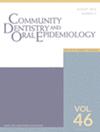Dental caries and associated factors among Turkish children and adults: Findings from the 3rd National Oral Health Survey
Abstract
Background
Information on the current status of oral health and related risk factors is lacking in Turkiye. This study aimed to evaluate dental caries and associated factors among the Turkish population using the findings of the third national oral health survey.
Methods
This cross-sectional epidemiological survey was carried out between March and September in 2018 including five index ages and age groups (5-, 12-, 15-year-olds, 35–44 and 65–74 age groups). A multistage cluster sampling design was used to obtain a national representative sample of these age groups. Participants were interviewed face-to-face using a structured questionnaire, and oral examinations were performed based on the methods and criteria suggested by the World Health Organization. The adjusted prevalence ratio for dental caries was estimated considering sociodemographic and behavioural characteristics by using log-binomial and robust Poisson regression analysis in R and SAS software.
Results
After data cleaning, a total of 11 091 participants remained. The prevalence of dental caries was 76.5% (95% confidence interval: 75.4%–77.7%) and determined to be associated with age, dental visit, and pain or discomfort history during the previous year among the Turkish population. Prevalence was also associated with the mother's education level among 5-, 12- and 15-year-olds. For the 35–44 age group, individuals living in urban areas had lower dental caries than those living in rural areas. For 65–74 age group, none of the factors were significantly associated with dental caries.
Conclusion
A high prevalence of dental caries was observed in Turkish children and adults. Therefore, it is necessary to strengthen current preventive oral health programs. Regular disease surveillance should be maintained. National oral health targets should be formulated in accordance with Turkiye's needs, resources and structure.

 求助内容:
求助内容: 应助结果提醒方式:
应助结果提醒方式:


